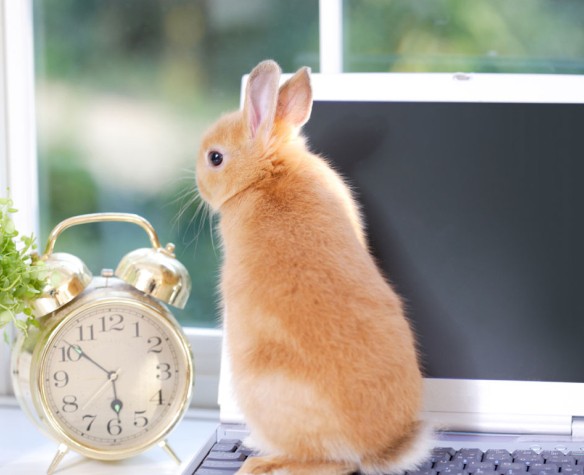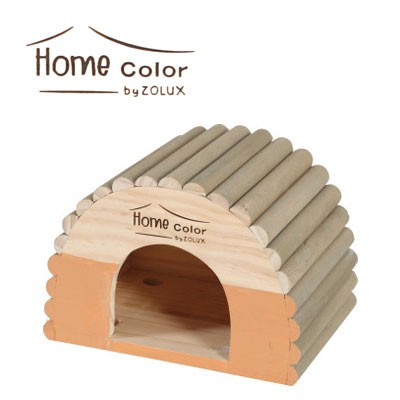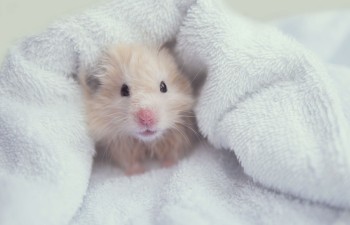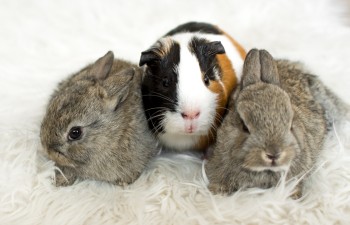
Pet rabbits
Knowledge of certain characteristics specific to rabbits is essential, in terms of both nutritional requirements and habitat. Here is some guidance to ensure your pet rabbit’s health and wellbeing, as well as information on various accessories for their habitat.
1- Dietary characteristics relating to rabbits
Rabbits are strictly herbivores. Their digestive tract is designed to function continuously and they require a very high fibre diet. Grass is the basis of their diet (hay or fresh grass). Rabbits are also inquisitive creatures which are fond of food and enjoy eating plants, fruit and vegetables, roots and tree bark.
2- General guidance on feeding your rabbit
- Always provide access to fresh, clean water, and change it daily
- Ad lib hay: Hay is the main component of the rabbit’s diet.
How can I tell if my rabbit’s hay is good quality? It should be very green, fairly fine, dry, have a pleasant smell, and should be free from mould and small insects. Your rabbit will also be a good “indicator” of hay quality: he will always prefer green sweet-smelling hay to coarse yellow hay.
- Offer your rabbit fresh vegetables: vary your rabbit’s vegetables each day so as to provide adequate vitamins and nutrients.
The main bulk of your rabbit’s vegetables should be “green”: celery, chicory, grass, dandelions, parsley, mint, basil, various types of lettuce, spinach, nettle shoots, etc.
Offer limited quantities of carrots and fruit, as these have a higher sugar content and can cause weight gain.
Rabbits’ favourite fruit: apricot, banana, cranberries, cherries, strawberries, raspberries, redcurrants, kiwi fruit, mangoes, blueberries, oranges (clementines, etc. without peel and leaves), papaya, apples, pears, etc.
Distribute greens in 2 meals per day: one in the morning and one in the evening.
Remove wilted grass and vegetables each day.
- Give your rabbit foods which he can gnaw on (hazel, birch or alder branches, etc.), which is natural rabbit behaviour (and which will stop him chewing on your chair legs!)
- You can also offer your rabbit commercial feed (granules, extruded feed). This should be distributed in small quantities (feed ad lib during the growth phase, but from 6 months, feed at a rate of 2-3% of your rabbit’s weight). Adult rabbits should be fed not more than 2 to 3 tablespoons of granules per day.
- However, avoid seed mixes which rabbits eat selectively, which can cause dietary imbalances.

3- Precautions
- Greens should be introduced gradually to avoid digestive problems. For example, start with a slice of carrot the first day, then a sprig of parsley the next day… gradually increasing the quantity and variety of fresh produce.
- Brassica-type vegetables (including broccoli) should be distributed in small quantities as these can cause bloating, and may even be poisonous in large amounts.
- Some types of lettuce, like butterhead and iceberg, should be avoided as these can be difficult to digest. However, you can offer your rabbit other varieties, such as batavia, oak leaf lettuce and rocket, etc.
- Some plants are poisonous: garlic, aloe vera, arum lily, bamboo, begonia, box, chrysanthemums, cypress, fig, geranium, ivy, lily of the valley, daffodils, onion, orange tree, daisies, poinsettia, leeks, buttercups, rhododendron, sage, Virginia creeper, etc.
4- What type of cage and accessories should I choose for my rabbit?
The cage is the rabbit’s habitat, a place where he can rest and spend his days! We will explain how to arrange his home, what type of cage to choose, and which essential accessories will help our rodent friends feel comfortable in their new habitat.
Tips on the characteristics of your rabbit cage:
What is the recommended size for a rabbit cage?
Dwarf rabbits like to move and need adequate space in their habitat. Here are the minimum dimensions for a rabbit cage: 100 cm long X 60 cm wide X 60 cm high. In fine weather, you can place your rabbit in an enclosed run, protected from sunlight. The run should be at least 2 m x 2 m. It should be high enough, or covered by mesh, to ensure that the rabbit cannot escape or be attacked by a dog or cat. A large run can also contain hiding places and boxes which can be used as lookout posts.
Where should I place the rabbit cage?
Rabbits are very sensitive to draughty areas (near windows, doors or corridors, etc.), so these should be avoided. The cage should also be near natural light, but not constantly exposed to full sun (south-facing windows) to avoid overheating. Rabbits are sociable animals: they enjoy being close to their masters, so the cage should be located close to the heart of the home. However, rabbits sometimes need to stay in a quiet place, hence passageways (corridors, doors, etc.) should be avoided.
Which cage accessories should I choose?
Here are essential accessories to create a cage suitable for your rabbit:
- Absorbent bedding, made from wood shavings, hemp, corn cobs, etc. Straw can also be added, but should not be the only component as it is not very absorbent.
- A food bowl and a water bottle or bowl.
- A hay rack for the daily ration.
- A small shelter to sleep, hide and feel safe.

5- Behaviour and wellbeing
Rabbits have an inquisitive, social nature (and live in groups in the natural state). They should preferably not be left alone in their cage all the time. They will appreciate the company of another rabbit or guinea pig, and also enjoy going out in the house or their outdoor run.
They are playful animals which are fond of food, and can learn numerous tricks in return for rewards. They also enjoy spending time bonding with their master (cuddles, grooming).
You are now familiar with the key aspects to ensure optimum comfort and wellbeing for your rabbit, along with a suitable feeding regimen, as these animals can be very sensitive to stress!
Article written by Dr Valérie Crousse, veterinary surgeon






